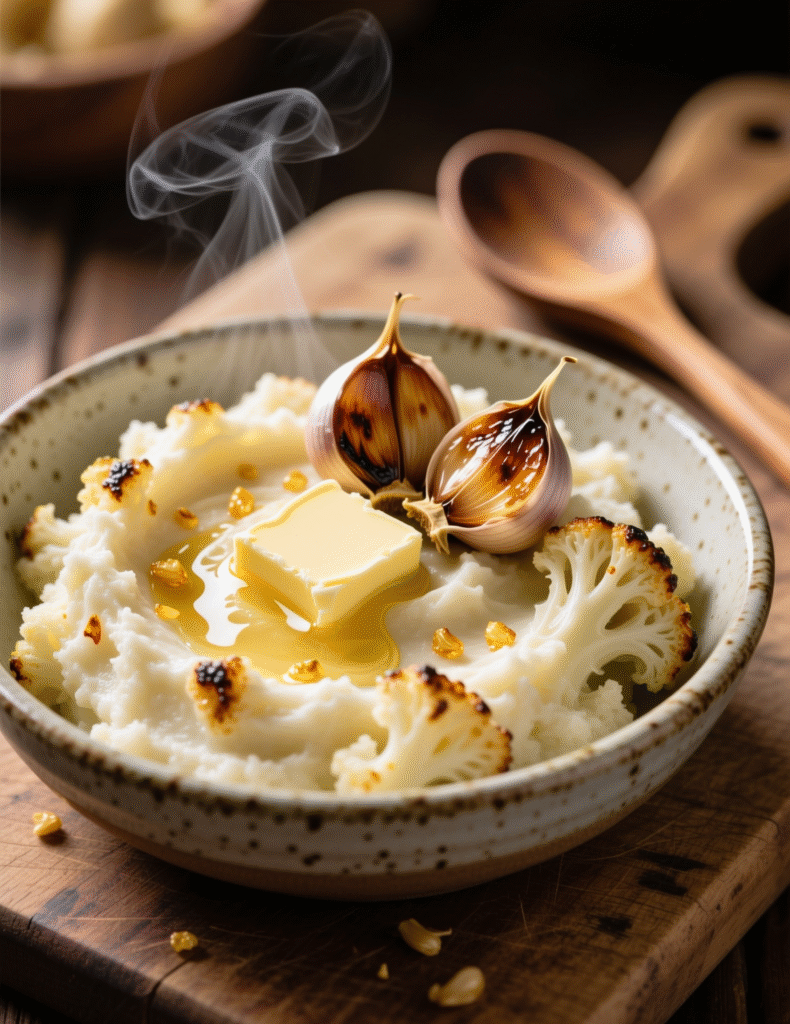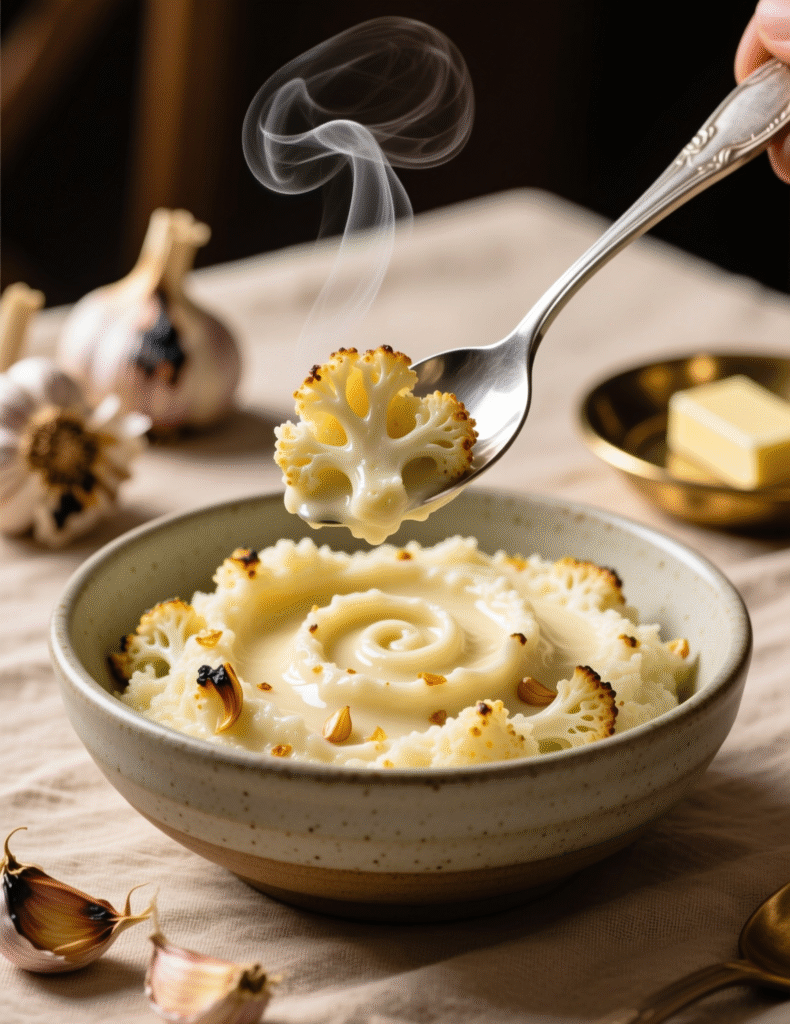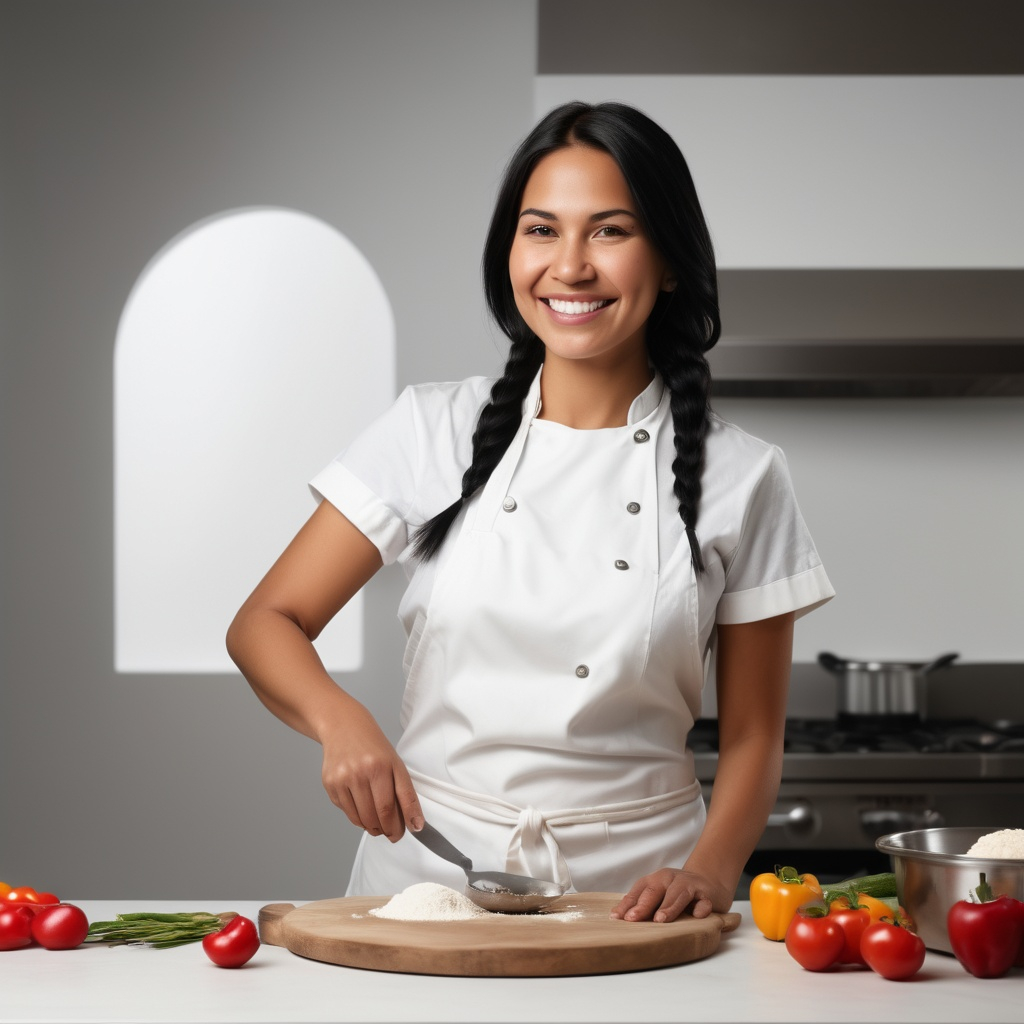There’s something quietly brilliant about swapping potatoes for cauliflower. It’s the kind of switch that makes you blink twice and mutter, “Wait… this tastes better?” This Creamy Roasted Garlic Mashed Cauliflower recipe isn’t just a lighter alternative—it’s a velvety, flavor-packed side dish that can sit proudly next to your favorite steak, roast chicken, or even grilled salmon. It’s elegance in a bowl, really.
Why Cauliflower Is the New Potato (Sort Of)
Let’s be honest—mashed potatoes have owned the comfort food throne for decades. But cauliflower has quietly been plotting its delicious takeover. Nutritionally, it’s a powerhouse: fewer carbs, less starch, and loaded with fiber, vitamins C and K, and antioxidants. The texture, when cooked right, mimics mashed potatoes so closely that many chefs have fooled guests in blind tastings. No joke, it’s happened in professional kitchens more than once.
The trick? Roasting instead of boiling. It dries the florets just enough to keep your mash from turning watery or thin. Roasted garlic adds that caramelized sweetness that whispers sophistication. You don’t just taste it—you feel it.
Ingredients You’ll Need
Here’s what you’ll need to create six generous servings:
- 2 medium heads of cauliflower, cut into florets
- 1 whole garlic bulb
- 3 tablespoons olive oil (divided)
- 1/4 cup heavy cream (or more, depending on texture)
- 3 tablespoons unsalted butter
- 1/4 cup grated Parmesan cheese
- Salt and black pepper, to taste
- Optional: fresh chives or parsley for garnish
That’s it. Simple, but when done right, these ingredients create something magic.
Step 1: Roast the Garlic Like You Mean It
Preheat the oven to 400°F (200°C). Slice the top off the garlic bulb to expose the cloves. Drizzle with a teaspoon of olive oil, wrap in foil, and roast for 35–40 minutes until soft, golden, and slightly sticky. The smell alone could sell real estate—it’s that inviting.
Roasted garlic is the backbone of this recipe. Raw garlic bites; roasted garlic hugs. It mellows, deepens, and sweetens, adding layers that transform basic cauliflower into something you’d serve at a fine dining table.

Step 2: Roast the Cauliflower for Better Texture
While the garlic roasts, toss cauliflower florets in 2 tablespoons of olive oil, a sprinkle of salt, and pepper. Spread them on a baking sheet and roast for about 25–30 minutes. You want edges lightly golden, not burnt.
Now, here’s where many go wrong—they steam or boil it. That’s fine for purées, but not for this dish. Roasting keeps the water content low, concentrating flavor and giving the mash a creamy body without being soggy. Chefs call this moisture control. Home cooks call it “not ruining dinner.”
Step 3: The Creamy Transformation
Once everything’s roasted and your kitchen smells like heaven itself, transfer the cauliflower to a food processor. Squeeze the roasted garlic cloves out of their papery skins and add them in. Pour in heavy cream, butter, and Parmesan. Blend until smooth—scrape the sides down once or twice.
If the mixture feels too thick, add a splash more cream. Too thin? A spoon of Parmesan will fix that right up. Professional tip: let the mixture rest for 2–3 minutes after blending. It thickens slightly as it cools, just like mashed potatoes.
Step 4: Taste, Adjust, Perfect
Season to taste. Salt wakes up the flavors, pepper adds personality, and if you’re feeling bold, a tiny pinch of nutmeg makes everything warmer and cozier. Some chefs sneak in a dab of cream cheese for that extra richness, but honestly—it’s already dreamy as is.
Here’s the thing: cauliflower is a blank canvas. It absorbs flavor like a sponge. The roasted garlic gives it depth, Parmesan gives it saltiness, and butter… well, butter just makes life better.
Step 5: Serve Like a Pro
Scoop the mash into a warm bowl. Swirl the top with the back of a spoon, drizzle a hint of olive oil, and scatter some chopped chives or parsley. Serve it hot, and just wait for someone to ask if you used potatoes.
Pair it with grilled lamb, roasted turkey, or pan-seared salmon—it behaves beautifully next to rich proteins. If you’re serving vegetarians, it’s just as divine topped with sautéed mushrooms and a sprinkle of truffle salt.
Culinary Insights: Why This Works So Well
Texture is everything in mashed dishes. The reason mashed potatoes feel comforting isn’t just taste—it’s the mouthfeel. Cauliflower’s cellular structure, when roasted, mimics that same velvety starchiness. Combine that with the emulsification from butter and cream, and you’ve recreated the creamy, cloud-like mouthfeel without the heavy carbs.
It’s science, really. Cauliflower contains pectin, a type of soluble fiber that, when heated and blended, thickens naturally—no flour or starch required. That’s why this recipe feels indulgent but sits light.
A 100-gram serving of mashed cauliflower clocks in around 35 calories compared to about 90 for mashed potatoes. Less guilt, same joy.
Variations for the Adventurous Cook
Cooking’s never about sticking to rules—it’s about knowing when to break them. Try these twists if you want to play around a bit:
1. Truffle Infusion: Add a drizzle of truffle oil before serving. The earthy aroma pairs ridiculously well with roasted garlic.
2. Cheddar Cauliflower Mash: Replace Parmesan with sharp white cheddar. It adds tang and richness, perfect with grilled steak.
3. Herbed Delight: Blend in fresh thyme, rosemary, or tarragon for a garden-fresh flair.
4. Dairy-Free Version: Use coconut cream instead of heavy cream and olive oil in place of butter. It gives a faintly sweet note that works surprisingly well with garlic.
5. Cauliflower-Potato Hybrid: Mix half roasted cauliflower and half boiled potatoes. It’s a fantastic bridge for those still skeptical about full cauliflower mash.
Expert Tips for Flawless Results
- Drain moisture — If you accidentally steam instead of roast, place cooked cauliflower on a towel-lined tray and let it dry for a few minutes before mashing.
- Don’t skip the garlic roast — Raw or sautéed garlic won’t give that mellow sweetness; it’ll just overpower.
- Use a high-speed blender — A food processor or immersion blender gives that silky texture, no lumps.
- Warm your dairy — Cold cream or butter can seize up the fats, leading to a grainy mash. Warm them slightly before blending.
- Taste constantly — Seasoning cauliflower is delicate work; it needs more salt than you’d think.
The Role of Roasting in Flavor Building
Roasting transforms. It caramelizes the natural sugars in both cauliflower and garlic, producing nutty undertones and deeper umami notes. That’s why this mash doesn’t just taste “healthy”—it tastes rich.
A 2018 culinary study from the Journal of Food Science highlighted that roasting cruciferous vegetables like cauliflower boosts flavor complexity through Maillard reactions—essentially, browning magic. That’s what gives you that irresistible savory depth without relying on cream or cheese overload.

Common Mistakes to Avoid
- Over-roasting: Burnt edges bring bitterness. Keep an eye out after 25 minutes.
- Underseasoning: Cauliflower’s mild, so don’t hold back on salt or cheese.
- Using too much liquid: It’s easier to thin out thick mash than fix a watery one.
- Skipping rest time: Give it a moment before serving; it thickens beautifully.
Why Professionals Love This Dish
Restaurants adore versatile sides. This mashed cauliflower plays multiple roles—it’s keto-friendly, gluten-free, vegetarian, and pairs seamlessly with nearly any main course. It looks upscale but costs little, cooks fast, and holds well under heat lamps for service.
In catering, it’s a dream dish: reheats well, doesn’t split, and can even be made a day ahead. A touch of cream before reheating brings it back to life instantly.
A Note on Presentation
Presentation matters more than we admit. Spoon the mash onto plates with a slight swirl, then drizzle a faint line of olive oil or melted butter across the top. Sprinkle microgreens or fresh herbs for contrast. The creamy white mash against vibrant green herbs—simple, yet restaurant-grade.
Emerging Trends: Cauliflower in Modern Cuisine
Cauliflower’s moment isn’t fading anytime soon. Beyond mash, it’s showing up in crusts, rice, soups, and even steaks. The rise of plant-forward eating has given chefs reason to innovate with it, pushing it far beyond the steamed side dish of yesteryear.
Google Trends data shows a steady 60% increase in searches for cauliflower-based recipes since 2019. This shift isn’t just about health—it’s about versatility. Cauliflower can mimic textures, carry sauces, and adapt to global flavor profiles with ease.
Nutritional Breakdown (Per Serving, Approximate)
- Calories: 150
- Protein: 5g
- Fat: 11g
- Carbs: 8g
- Fiber: 3g
- Sugars: 2g
Not bad for something that tastes indulgent enough to fool your palate.
The Final Word
This Creamy Roasted Garlic Mashed Cauliflower isn’t pretending to be something it’s not—it’s simply proving it can be just as comforting, rich, and satisfying as the dish it replaces. The roasted garlic’s depth, the buttery smoothness, the subtle cheese bite—all blend into one silky, flavor-packed spoonful after another.
For chefs and home cooks alike, this recipe is a masterclass in balance. Flavor, texture, nutrition—all in one humble bowl. Whether you’re plating it for a five-course dinner or a casual family meal, it’s guaranteed to impress.
Try it once, and you’ll see why many kitchens never look back at plain mashed potatoes again.
FAQs
How do you keep mashed cauliflower from being watery?
Roast the cauliflower instead of boiling to remove excess moisture and achieve a creamy texture.
Can I make roasted garlic mashed cauliflower ahead of time?
Yes, you can refrigerate it for up to 2 days and reheat gently with a splash of cream.
What can I use instead of heavy cream?
You can use coconut cream, Greek yogurt, or milk for a lighter version.
How long does roasted garlic mashed cauliflower last in the fridge?
It stays fresh for about 3 to 4 days when stored in an airtight container.
Can I freeze mashed cauliflower?
Yes, freeze it in portions for up to 3 months and thaw in the fridge before reheating.
What’s the best way to reheat mashed cauliflower?
Warm it on the stove over low heat, stirring with a little cream or butter to restore smoothness.
Can I make this recipe dairy-free?
Absolutely—use olive oil or vegan butter and replace cream with coconut or almond milk.
Why roast garlic instead of using raw garlic?
Roasting brings out sweetness and removes the harsh bite of raw garlic.
Can I add cheese to this recipe?
Yes, Parmesan or cheddar adds depth and enhances the creamy texture.
How many calories are in mashed cauliflower compared to mashed potatoes?
Mashed cauliflower has about one-third the calories of mashed potatoes per serving.
Can I use frozen cauliflower instead of fresh?
Yes, but roast it from frozen to avoid excess moisture and ensure good texture.
Is mashed cauliflower keto-friendly?
Yes, it’s naturally low in carbs and fits perfectly into a keto or low-carb diet.
What protein dishes pair well with mashed cauliflower?
It pairs beautifully with grilled steak, roasted chicken, or baked salmon.
Can I make it in a blender or food processor?
Yes, both work great—just blend until smooth and creamy without overmixing.
What herbs go best with roasted garlic mashed cauliflower?
Fresh chives, thyme, or parsley add bright, fresh flavor to balance the creaminess.

Marie Smith is a passionate recipe blogger, sharing easy, delicious, and creative culinary ideas that inspire home cooks to elevate everyday meals with flavor and simplicity.
